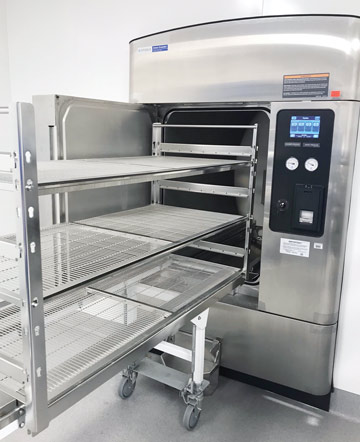The more space you can reasonably designate for sterile processing, the better. The original plan for the WVU Medicine Berkeley Medical Center in Martinsburg, W.Va., which opened in early 2018, was to handle gastroenterology and ophthalmology cases exclusively. But before long the center was also performing neurosurgery, urology, gynecology and pain management procedures.
With additional service lines came a previously unanticipated need for new equipment. “Now we’re a full-service surgery center, so we’ve had to make some changes, including adding a washer-disinfector and autoclave,” says Nicole Sinsebox, RN, director of outpatient surgery at the center. “We had to run additional lines for washers, which meant we had to block off the area so they could do the construction. That caused some delays.”
Lesson learned. “I’d suggest to people who are opening new centers that they plan for more than what their original scope was,” says Ms. Sinsebox, “because there are definitely additional costs associated with changing the original design of the central sterile area.”
It also pays to be absolutely certain that architects, builders and reps are on the same page. “We should have gotten better information from our reps as to where piping and water connectors needed to be,” explains Ms. Sinsebox. “At the last minute we had to do some reconfiguring, and we ended up with a less preferable flow as a result. Have everybody look at the design, not just the construction team. The original construction didn’t fit the way we needed to configure the equipment.”
.svg?sfvrsn=be606e78_3)

.svg?sfvrsn=56b2f850_5)